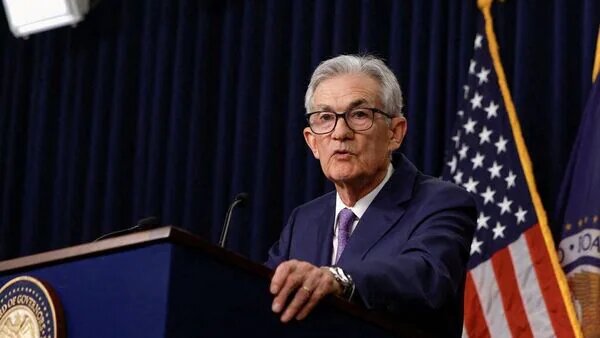As the Federal Reserve (Fed) approaches its September meeting, investors are keenly attuned to signals that could indicate a potential rate cut. Monetary policy decisions by the Fed have far-reaching implications for the economy, financial markets, and investment strategies. A change in the interest rate, particularly a reduction, could signal shifts in economic conditions and influence investor behavior. This article explores the factors influencing the Fed’s decision-making process, the potential impact of a September rate cut, and how investors are positioning themselves in anticipation of this crucial announcement.
Understanding the Federal Reserve’s Monetary Policy
The Federal Reserve, the central bank of the United States, plays a pivotal role in shaping economic conditions through its monetary policy. The Fed’s primary tools for influencing the economy are the federal funds rate and open market operations. The federal funds rate is the interest rate at which banks lend to one another overnight, and it influences other interest rates throughout the economy, including those for loans, mortgages, and savings accounts.
The Fed adjusts interest rates to achieve its dual mandate: fostering maximum employment and maintaining stable prices (inflation). By raising or lowering the federal funds rate, the Fed can influence economic activity. Lower rates typically stimulate borrowing and spending, potentially boosting economic growth, while higher rates can slow down the economy to control inflation.
Factors Influencing the Fed’s Decision on a Rate Cut
Several factors could influence the Federal Reserve’s decision to cut rates in September:
1. Economic Data and Indicators:
Economic indicators such as GDP growth, unemployment rates, and inflation data are crucial for the Fed’s decision-making process. Recent economic data reflecting weaker-than-expected growth or signs of economic slowdown may prompt the Fed to consider a rate cut to stimulate the economy.
2. Inflation Trends:
Inflation is a key consideration for the Fed. If inflation remains below the Fed’s target level or shows signs of easing, the central bank might opt for a rate cut to support economic activity. Conversely, rising inflation could lead the Fed to maintain or raise rates to prevent overheating.
3. Employment Levels:
The labor market is another critical factor. If employment growth slows or if there are signs of rising unemployment, the Fed may decide to cut rates to support job creation and economic stability.
4. Global Economic Conditions:
International economic developments, such as trade tensions, geopolitical risks, or global economic slowdowns, can influence the Fed’s decision. The Fed considers global economic conditions as they can impact U.S. economic growth and financial markets.
5. Financial Market Conditions:
Volatility in financial markets, including stock market fluctuations and bond yields, can also affect the Fed’s stance. A significant downturn in financial markets might prompt the Fed to act to stabilize the economy.
6. Fed Officials’ Statements and Guidance:
Statements and speeches by Federal Reserve officials provide insights into their perspectives and policy intentions. Investors closely monitor these communications for hints about potential rate changes.
Potential Impact of a September Rate Cut
A rate cut in September could have several implications for the economy and financial markets:
1. Stimulating Economic Growth:
A reduction in interest rates typically lowers borrowing costs for consumers and businesses, potentially leading to increased spending and investment. This can stimulate economic growth, boost consumer confidence, and support job creation.
2. Impact on Financial Markets:
Interest rate changes can influence various asset classes. Lower interest rates generally lead to higher stock prices, as investors seek higher returns in equities. Bond prices typically rise as yields decline. However, the impact on financial markets can vary based on investor expectations and market conditions.
3. Effect on Inflation:
A rate cut could impact inflation dynamics. Lower interest rates may boost demand, potentially leading to higher prices. However, if inflation is already below target, a rate cut might have a limited effect on increasing inflationary pressures.
4. Currency and Exchange Rates:
Interest rate changes can affect currency values. A rate cut may weaken the U.S. dollar as lower interest rates reduce the attractiveness of dollar-denominated assets. This could impact international trade and investment flows.
Investor Strategies and Positioning
In anticipation of a potential rate cut, investors may adjust their strategies and positioning in various ways:
1. Adjusting Asset Allocations:
Investors may rebalance their portfolios to take advantage of lower interest rates. This could involve increasing allocations to equities and other growth assets, while reducing holdings in fixed-income securities that may be negatively affected by lower yields.
2. Monitoring Economic Data:
Investors will closely monitor economic data releases and Fed communications for signals about the likelihood of a rate cut. Economic indicators such as employment reports, inflation data, and GDP growth will be scrutinized for insights into the Fed’s decision-making process.
3. Hedging Strategies:
Some investors may employ hedging strategies to manage potential risks associated with rate cuts. This could include using options or futures contracts to hedge against potential volatility in financial markets.
4. Sector Rotation:
Investors may rotate their investments into sectors that tend to perform well in a low-interest-rate environment. For example, sectors such as technology, consumer discretionary, and real estate may benefit from lower borrowing costs and increased consumer spending.
5. Evaluating Fixed-Income Investments:
Given the potential impact on bond yields, investors in fixed-income securities may reassess their bond holdings. Longer-duration bonds may be more sensitive to interest rate changes, and investors may consider diversifying into other fixed-income instruments.
Challenges and Considerations
While a rate cut may offer benefits, it also comes with challenges and considerations:
1. Limited Impact in a Low-Rate Environment:
In a low-interest-rate environment, the effectiveness of rate cuts in stimulating economic growth may be limited. The Fed’s ability to use rate cuts as a tool for economic stimulation diminishes when rates are already low.
2. Market Expectations:
Investor expectations can influence market reactions to rate cuts. If a rate cut is already priced into the market, the actual impact may be muted, and investors may need to adjust their strategies based on evolving expectations.
3. Long-Term Implications:
While short-term rate cuts can provide immediate relief, there may be long-term implications for financial stability and economic growth. Prolonged periods of low rates can lead to asset bubbles and financial imbalances.
Disclaimer: The thoughts and opinions stated in this article are solely those of the author and do not necessarily reflect the views or positions of any entities represented and we recommend referring to more recent and reliable sources for up-to-date information.



